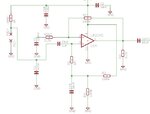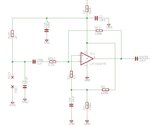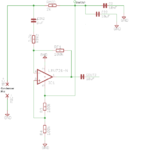aetosa
Member level 3
I've made a hearing aid which uses LM324 (the one of it's 4 opamps) as a microphone preamplifier.
It works at 3 volts.
Voltage amplification at the output of LM324, approximately 45. That's 33db I think.
Which microphone preamplifier IC would you suggest as a replacement of LM324?
My goal is to make a smaller circuit with fewer parts.
I think in mobile phones must be used a variety of preamplifier ICs.
It works at 3 volts.
Voltage amplification at the output of LM324, approximately 45. That's 33db I think.
Which microphone preamplifier IC would you suggest as a replacement of LM324?
My goal is to make a smaller circuit with fewer parts.
I think in mobile phones must be used a variety of preamplifier ICs.




